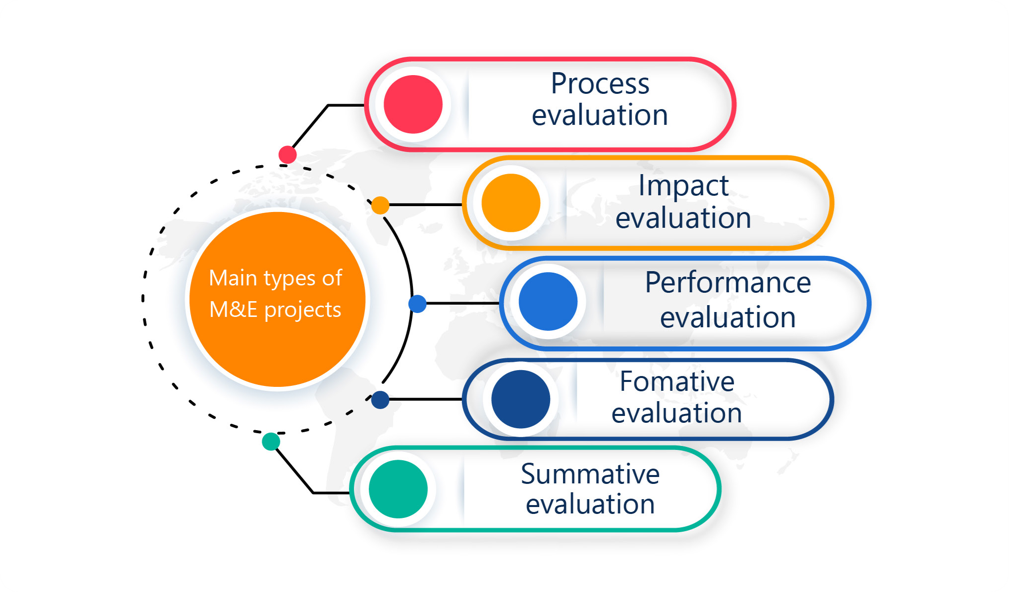Monitoring and evaluation (M&E) are systematic processes that help to determine the effectiveness of projects, programs, and policies, and are key areas of expertise with the highest capacity of IRIM. M&E projects alone account for about 35% of all those implemented by IRIM, and through them, IRIM aims to support the coherent, effective, efficient, impactful, and sustainable implementation of projects in the development sector. IRIM avoids reinforcing the traditional approach of perceiving M&E as monitoring and audit. As part of a process of continuous improvement of projects and programs, and the system for evaluating the lessons learned, IRIM strives to make stakeholders aware, and understand its importance, and organize its result- and participatory-based M&E methods.
Depending on the sector, topic, project activity, and the beneficiary parties - and according to the style and characteristics of the stakeholders - when performing M&E projects IRIM collects data using anonymous surveys, interviews, spider webs, problem trees, H-forms, and card sorting methods; in traditional and digital form. Recently, IRIM has been using innovative methods in M&E projects, based on public participation; such as, Photovoice and Participatory video.
Introducing the types of M&E that we mainly perform:

M&E projects tend to be more independent and evidence-based than other research projects, requiring a professional and external perspective and analytical capacity from the evaluation team. Therefore, to improve IRIM’s M&E skills, the Institute works as a member of national, regional, and international associations and networks of professional evaluators, and pays attention to continuous improvement of the M&E capabilities of the organization's teams and experts. For instance:
• Since 2016, IRIM has been a member of the Asia-Pacific Evaluation Association (APEA), demonstrating its commitment to improving evaluation practices in the region (and in Mongolia) by sharing evaluation practices and adopting regional best practices.
• In 2017, IRIM initiated the Mongolian Evaluation Network (MEN) and is currently working as the Secretariat, to promote the adoption of the Asia Pacific Regional Evaluation Strategy and international evaluation standards in Mongolia.
• In addition, IRIM continuously strengthens its expertise and knowledge by being regularly involved in the International Program for Development Evaluation Training (IPDET).

